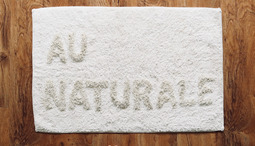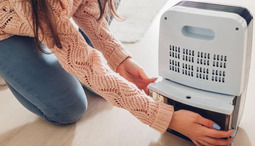Before you head over to the types, things to consider when buying them, and other options, you must know what a floor mat is. Why do you need one?
What is a floor mat?
A floor mat is a covering for your floor which protects it from harsh damages and saves money on maintenance. Floor mats aren't just for your house; they can also be used to protect the flooring of your industry, restaurants, and any structure you want to protect from dust and debris.
If you want detailed information on floor mats, visit LuminaBlog UK and read the basics about floor mats.
Why do we need floor mats?
There are several reasons for which floor mats are considered.
Security
Every person should prioritise floor protection mat when thinking of constructing or renovating a house. You’ll never want someone to fall off the ground. These protection mats are a great solution to keep everyone in your place safe. They can help to dry damp shoes while also providing greater traction for anyone walking on them.
Cleanliness
Commercial buildings and facilities are frequently subjected to heavy foot traffic. As a result, there are several entry points for debris and fluids externally. Entrance floor mats effectively address this problem by keeping as much outside dirt from entering your business as possible. There's also the possibility of an accident if one of your employees drops anything on the floor at some time.
Floor protection
The quality of your flooring is crucial. Shoes track in pebbles, mud, and other debris, scratching and damaging your flooring. If you want to preserve your floors from long-term harm, you should invest in runner mats.
Moreover, buy the floor mats from the best shopping websites to make sure you’re spending money at the right place.
Types of floor mats
With hundreds of options available in the market, mats are categorised into the following types;
Entrance mat
Mats are required at all doors, and you should almost certainly have a mat outside that scrubs the soles of shoes and eliminates some dirt before the individual enters.
Anti-fatigue mat
Anti-fatigue mats should be provided anywhere people are required to stand for lengthy periods. A Kitchen floor mat is a great example of an anti-fatigue mat. People feel better and have fewer joint aches and pains when they use anti-fatigue mats.
Waterhog mat
These mats are used in wet areas as well as used for wet-weather conditions. They absorb a lot of water and keep it from becoming tracked about your place. They are also called super-absorbent floor mats.
Interlocking floor mat
These mats come in puzzle form that is easy to install and don't require any professional help. Nowadays, they are used everywhere. From baby rooms to gym floors to industrial locations, every place demands interlocking floor mats to protect its flooring. Moreover, hot tub floor mats are common to keep the hot tub surrounding slip-resistant and clean.
Industrial floor mat
Industrial floor mats are built for heavy-duty work and you don’t have to worry about the heavy equipment damaging your floor. They are large floor mats and are implemented in factories to drastically lessen the impact that heavy industrial items have on the environment.
Heated floor mat
A Heated floor mat keeps the place warm on cold days. Some mats are water-oriented but the most effective and great option to consider is electrically operated floor mats. They are budget-friendly and keep the desired temperature for long hours.
Are there chair mats too?
Chair mats are required for your staff. If you don't use a chair pad, your floor will be wrecked by wheeled chairs. Employees will also be more productive. Have you ever tried pushing a chair over a carpeted floor without a high chair floor mat? Overall, mats are a simple and affordable solution to keep your office neater, cut your maintenance expenses, extend the life of your flooring, and make your entire workplace safer. Commonly, black floor mats and grey floor mats are matched with the decor.
How to choose the best floor mat?
When looking for floor protection mats, check for these elements to keep your establishment safe, clean, and appealing.
Non-slip and Anti-trip
You may avoid the effort of shifting floor mats with good floor mats. Even the greatest non-slip or anti-slip rubber, carpet, and vinyl floor mats seem out of place and become tangled up in shoes. Floor mats made of aluminium are fitted with your flooring. They keep put even when there is a lot of foot activity. These anti-slip and anti-trip metal floor mats and grids are non-slip.
Saves bucks on cleaning
Customers and clients might be left with a memorable first impression if the floors are kept clean. However, whether you manage a retail store or a manufacturing factory, maintaining your floors clean might feel like a lost struggle. That’s why floor mats are considered to reduce the cleaning efforts.
Customizable according to the setting
Whether you’re buying floor mats for industry, house, or restaurant, they should be both useful and appealing. You shouldn't have to sacrifice safety in the name of beauty. You don't have to use metal floor mats. Custom entry solutions are created by Base Specialties in collaboration with businesses. For baby floor mats, customization is important so that they keep playing joyfully.
Choose the perfect floor mat colour
There are several options available when it comes to floor mats. After selecting everything, you should consider colours also;
1. You don't want anything to mismatch, so stay within the colour families and choose something that complements your current decor.
2. Make use of colour theory! Choosing colours is a science in and of itself. If you choose a colour that is similar to or matches current hues, you can't go wrong.
3. This is self-evident since mats with extremely light shades will display filth much more immediately than mats with a medium or dark tint. As a result, very light mats will need to be washed more frequently than darker mats. So, avoid using colours that are too light.
4. Make a statement with vibrant colour! If you're going to use a logo mat, look for something strong to speak volumes.
How to clean floor mats
Floor mats perform heavy-duty work so we should clean them to keep them functional. Follow these instructions for cost-effective cleaning;
1. Vacuum your floor mat (This step removes dirt and debris that is easy to remove)
2. Take soapy water and scrub the mats using a sponge (This step is applicable when there are stains). You can also try floor mat cleaner but this solution is an effective one.
3. Finally, clean the mats with water.
When should you replace floor mats?
At some point, you’ll have to replace your floor mats to maintain the appearance. Following are the events when you should consider replacing the floor mats;
The grip is minimal to non-existent.
While floor mats are useful for keeping dirt and moisture out of your flooring, they're also meant to keep you safe from taking a fall. Numerous times you’ll have to walk in and out of your place every day, and your floor mats might easily get worn out in a short time. If your floor mats have lost most of their texture, it's time to replace them.
When the corners of the mat begin to curl
Bending around the borders is another evident indicator of misuse. These little faults not only detract from the appearance of your floor, but also increase the risk of falling backward.
When they become more difficult to clean
A weekly thorough vacuum cleaning is required for most floor mats. Outdoor floor mats and dirt slicers may need to be chemically treated regularly. It's time to obtain replacement mats from your source when this routine cleaning time grows longer and dirt collection becomes harder to get rid of.
I hope this guide helped you in selecting the appropriate floor mat for your needs.









